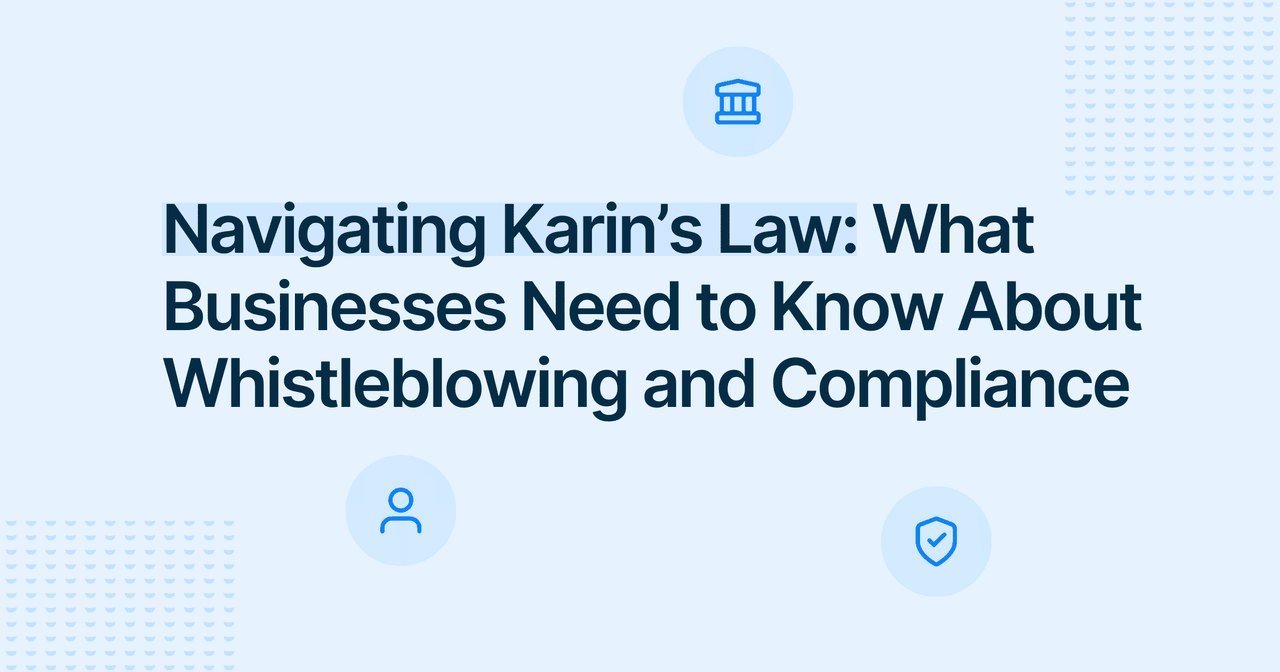



Discover the benefits of a transparent organization!
Try our free platform and strengthen the culture of openness in your team.
Employee Relations

Yeva Bartkiv
Copywriter
Published
2025-05-13
Reading time
7 min


Table of contents
Subscribe to our newsletter
In the ever-evolving landscape of human resources, managing employee relations cases has become both a strategic and operational priority. For HR professionals working in mid-to-large-sized organizations, the ability to navigate complex employee relations issues with precision and consistency is critical to maintaining a positive work environment, ensuring compliance, and supporting employee engagement. This guide explores the role of HR in employee relations, outlines tools and techniques for effective employee relations case management, and offers best practices for building a strong company culture.
The role of HR in managing employee relations cases extends far beyond enforcing policy. HR teams act as mediators, investigators, and compliance stewards, all while promoting employee satisfaction and well-being. They manage conflict resolution, guide labor relations, and support team members through various stages of the employee lifecycle, from onboarding to career development.

A strategic approach to employee relationship management is vital in ensuring consistency, fairness, and legal compliance. To streamline this process, many HR departments are turning to employee relations case management software and comprehensive employee relations software solutions that integrate automation, documentation, and analytics.
Managing employee relations comes with several challenges:
These pain points emphasize the importance of adopting an efficient employee relations case management system that can help HR teams operate more effectively while addressing common obstacles.
Using specialized employee relations case management software – such as HR Acuity, Ethena, or ServiceNow HRSD – can significantly enhance how HR teams manage workplace issues. These platforms allow organizations to:
While solutions like HR Acuity lead in end-to-end ER case management, tools such as FaceUp can complement this by offering secure, anonymous reporting – an important intake feature that feeds directly into the ER process. These systems not only streamline case handling but also promote fairness, transparency, and improved employee satisfaction.

Automation tools like BambooHR, Personio, or Monday.com HR workflows help reduce manual effort and ensure that every step in the ER case lifecycle – from intake to resolution – is executed with consistency and speed.
These platforms enable HR professionals to scale their efforts and focus more on resolution strategies and employee engagement.
Systems such as PowerDMS, ConvergePoint, or PolicyTech help maintain up-to-date policies and ensure they’re accessible to all employees.
Policy tools play a critical role in case prevention by improving awareness and compliance across the organization.
Real-time feedback and reporting platforms such as FaceUp, Officevibe, or Culture Amp are key for early detection of morale issues and unspoken concerns.
FaceUp, in particular, excels in offering a discreet and secure way for employees to submit anonymous complaints or concerns to HR – often the first step in uncovering and managing complex employee relations cases.
Implement consistent templates, guidelines, and documentation practices. This ensures a fair process and strengthens compliance. Standardized processes help eliminate ambiguity, promote effective employee relations, and enable HR teams to address complex employee relations cases more confidently.
Organizations should maintain a playbook or SOP for managing different types of employee relations cases. This includes templates for interview questions, investigation reports, communication emails, and final decision letters.
The HR department should invest in continuous training on labor laws, active listening, effective communication, and problem-solving. This builds trust between HR and employees and strengthens the HR team’s capabilities in managing difficult employee relations cases.
Workshops on conflict resolution, empathy, and performance management can equip HR professionals with the soft skills necessary for navigating emotionally charged situations. Additionally, legal training ensures that HR decisions are grounded in current employment law.
Encourage check-ins and open dialogue between managers and employees. Early detection and resolution of issues reduce employee turnover and foster a positive workplace. Regular team meetings and engagement surveys are valuable tools for identifying concerns before they escalate into formal cases.

Creating safe spaces for employees to share concerns and implementing anonymous feedback mechanisms can significantly reduce conflict and improve employee morale. A culture of transparency and trust supports retention and long-term engagement.
Track metrics such as resolution time, recurrence of similar cases, and outcomes to guide HR strategies and initiatives. These insights can help HR departments refine workflows, anticipate future challenges, and measure the effectiveness of conflict management initiatives.
Analyzing trends across departments or locations also provides visibility into systemic issues, enabling proactive interventions and better resource allocation. Metrics should be reviewed regularly and shared with leadership to ensure alignment with organizational goals.
Focus on building a work environment that supports employee well-being, work-life balance, and retention. Proactive HR management contributes to employee engagement and a healthier company culture. Implementing recognition programs, career development initiatives, and employee wellness activities fosters positive relationships.
Creating a culture of appreciation and recognition builds trust and enhances the overall employee experience. When team members feel valued, they are more likely to engage positively with the organization and remain committed over time. Improving employee relations should be an ongoing priority that is woven into the fabric of HR strategy.
Employee relations is more than case management - it's about shaping the employee experience. A strong company culture is built through open communication, effective employee relations, and a commitment to listening to employee concerns.
By actively addressing these aspects, HR professionals can build a resilient and collaborative workplace where challenges are met with transparency and empathy.
Managing employee relations is a critical function of human resource management. By leveraging employee relations case management systems and focusing on positive employee relations, HR professionals can streamline operations, mitigate risk, and drive employee engagement.
When the HR team embraces effective tools, standardized processes, and a proactive mindset, they not only solve difficult employee relations cases - they prevent them. The result is a workplace where employee morale, trust, and performance thrive.
Human resources professionals have a powerful opportunity to shape the employee experience and influence organizational success. Through thoughtful employee relationship management, continuous training, and smart use of employee relations software, the HR department becomes a catalyst for sustainable growth and employee satisfaction.




Try our free platform and strengthen the culture of openness in your team.
Keep Reading

Alaa El-Shaarawi2025-12-197 min
Workplace Environment

Marie Roland2025-12-165 min
Whistleblowing

Alaa El-Shaarawi2025-12-087 min
Workplace Environment